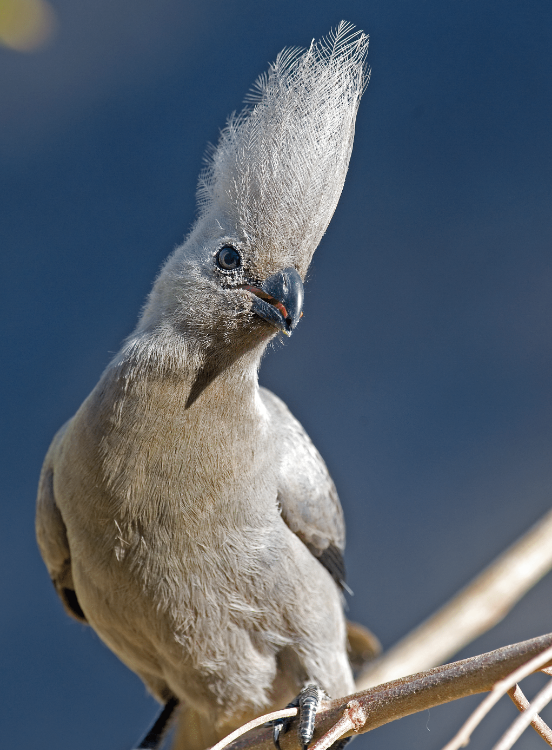Windhoek to Sossusvlei via the mountain passes
August 28, 2012Campsite Journal: Bergquell near Windhoek
August 28, 2012Pearlspotted owl
Glaucidium perlatum
Roberts’ No 398
by Pompie Burger
Being one of the smallest owls in Namibia as well as in Southern Africa does not seem to have any effect on the Pearlspotted owl’s self-confidence, especially if you happen to look into those penetrating eyes: the front pair, that is, and not the two “eyes” sitting at the back of its head. The second set of “eyes” differentiates this owl from its look-alike, the Barred owl, the other small owl in Namibia. These false eyes are thought to prevent possible attacks from behind by a potential predator, such as some of the raptors. The Pearlspotted owl has a big head that can turn 360 degrees, and also relatively large feet. Small ear tufts can sometimes be seen, but as a rule they are not visible.
The “Pearlie”, contrary to other owl species, is relatively active during the daytime, especially during the breeding season, and therefore doesn’t have the sleepy eyes of its fellow owl-family members during the day. Its whistle can be mimicked quite easily. This has a double advantage for the bird watcher, firstly because Pearlies are quite responsive when you call them, and secondly because other small birds tend to react by mobbing this “intruder” in their territory. Pearlies often call in duet, the male call being the somewhat lower “tui tui tui” call, rising in volume, followed by the female higher-pitch call “peeo peeo peeo”. This call is heard especially at the start of the breeding season and can continue for hours.
Pearlspotted owls prey on other small, and sometimes not so small, birds, such as the Laughing dove, as well as on frogs, insects, lizards and rodents. They nest during early summer in trees in a barbet’s or woodpecker’s hole. These nests are often re-used.
They tend to become quite used to people and are common residents in camps in game parks. I think, as a matter of fact, that if a lodge or camping site does not have a resident Pearlspotted owl, its manager should apply immediately at the Ministry of Environment and Tourism for a pair to be delivered.
About the author:
Based in Windhoek, Pompie Burger is an orthopaedic surgeon whose part-time passion is photography, in particular wildlife, and specifically birds. This regularly takes him to the most remote corners of the country, resulting in riveting images and articles.
Pompie is the author and photographer of the coffee table book Birds of Namibia, which was published in 2008. The book contains articles and photographs which attest to the insight and knowledge of an accomplished observer.
Read more of his articles in our Birding Section.
This article appeared in the Feb/March ‘04 edition of Travel News Namibia.


